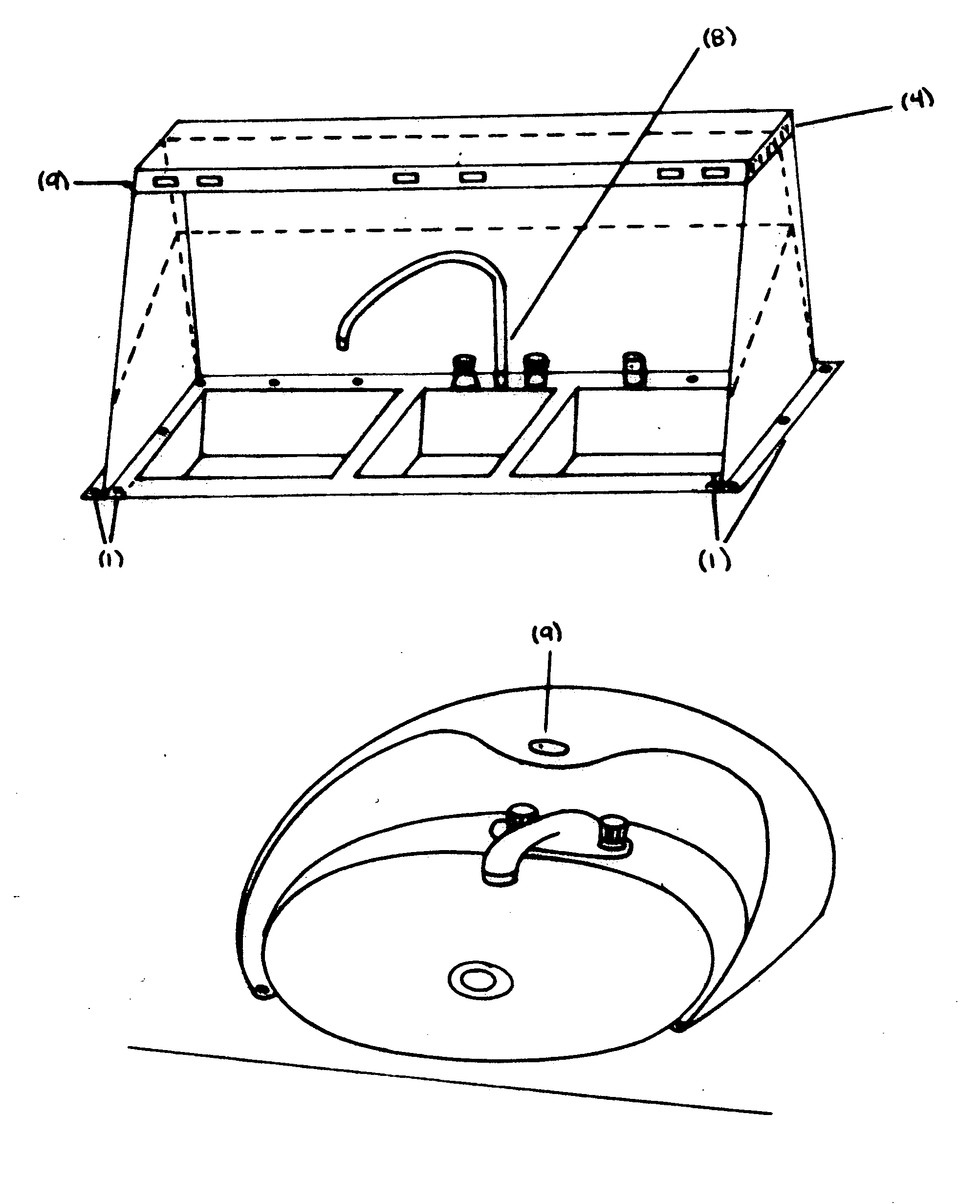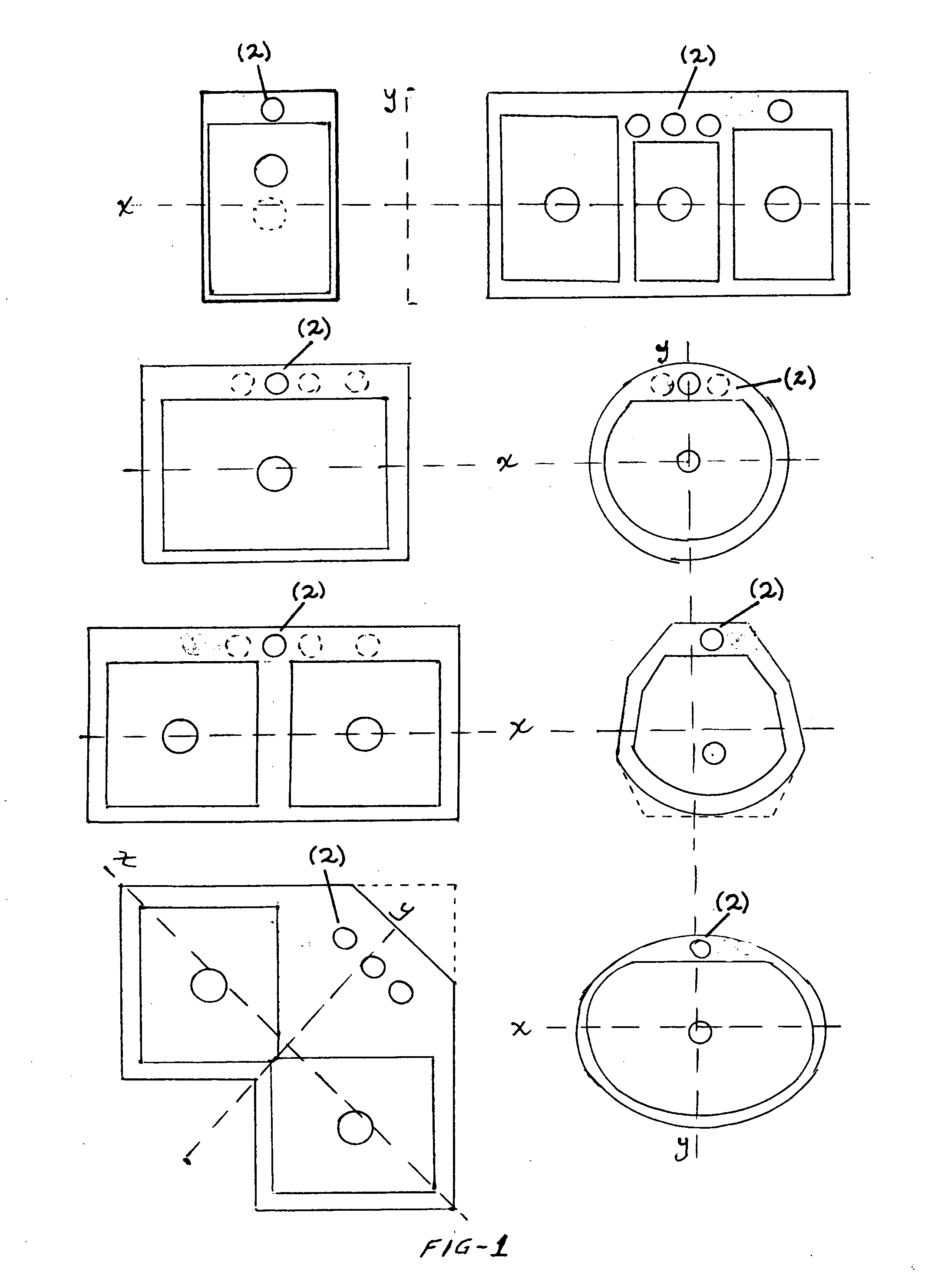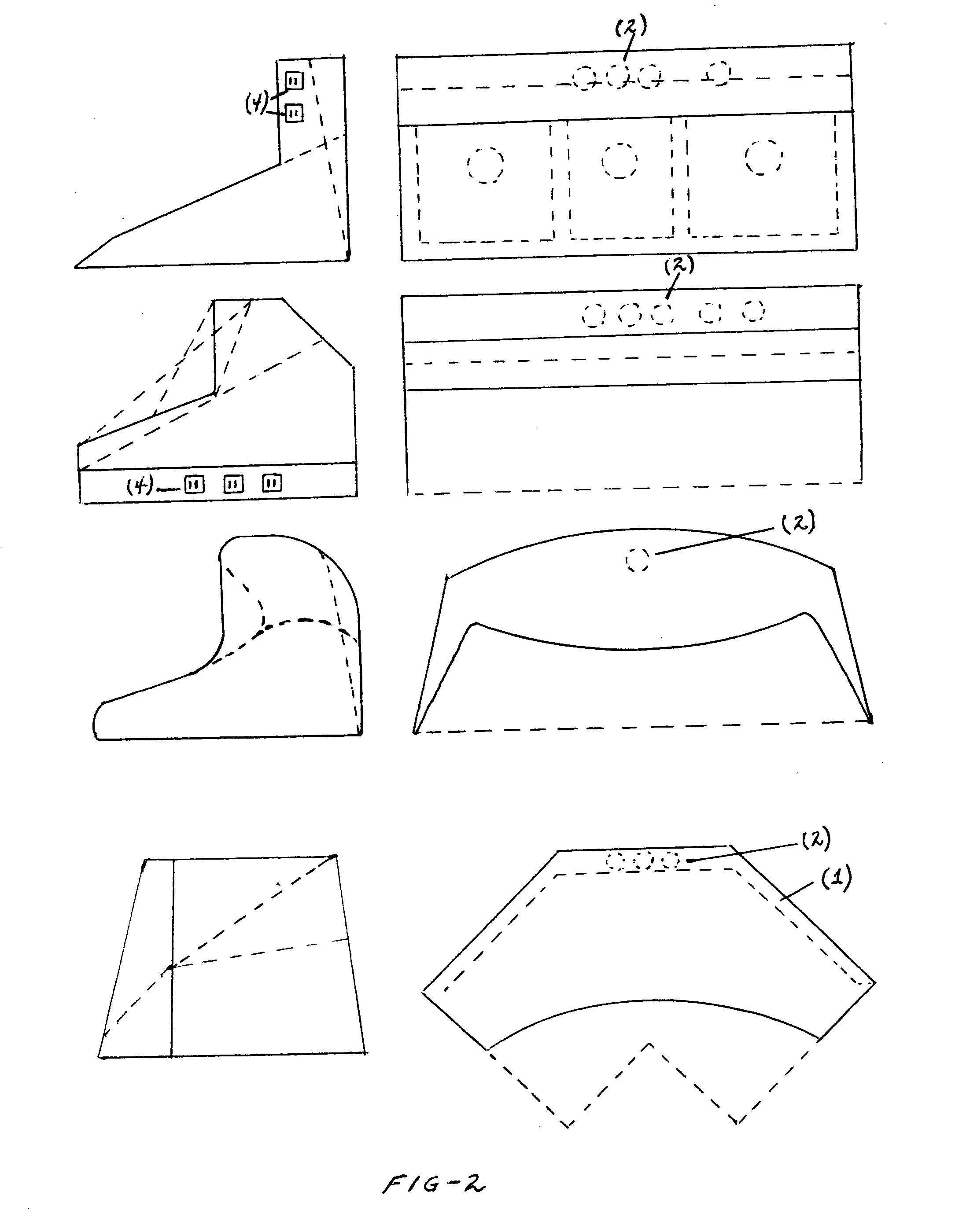Sink and lavatory shell
a technology for lavatory shells and sinks, applied in water installations, kitchen equipment, construction, etc., can solve problems such as rust, calcium and mildew buildup, and contamination of everything it touches, and achieve the effect of different looks
- Summary
- Abstract
- Description
- Claims
- Application Information
AI Technical Summary
Benefits of technology
Problems solved by technology
Method used
Image
Examples
Embodiment Construction
[0004]This new product can be manufactured in the same standard sizes used to make sinks and lavatories in the home and industrial settings (single, double, triple, circular, oval, irregular, even cater-cornered sinks) (see FIGS. 1, 2, 3, 4, 5, 6, 7&8) using the following materials: solid wood, particle board, stainless steel, aluminum alloy, brass, titanium, ceramic even tempered glass; or synthetic materials such as fiber glass, acrylics, plastics, carbon fiber, etc. If metal materials are used for manufacturing, they can be plated for protection or to make any desired texture. Metal shells can be manufactured using the same processes as cutting sheet metal (A preprogrammed or predesigned matrix (acetylene and oxygen, water jet, laser, etc). Other alternative processes are forming and welding metal materials and molding. Furthermore, the shell can even be made together with the sink or faucet as one piece. The height of the shell varies between 6 and 36 inches depending upon the m...
PUM
 Login to View More
Login to View More Abstract
Description
Claims
Application Information
 Login to View More
Login to View More - R&D
- Intellectual Property
- Life Sciences
- Materials
- Tech Scout
- Unparalleled Data Quality
- Higher Quality Content
- 60% Fewer Hallucinations
Browse by: Latest US Patents, China's latest patents, Technical Efficacy Thesaurus, Application Domain, Technology Topic, Popular Technical Reports.
© 2025 PatSnap. All rights reserved.Legal|Privacy policy|Modern Slavery Act Transparency Statement|Sitemap|About US| Contact US: help@patsnap.com



